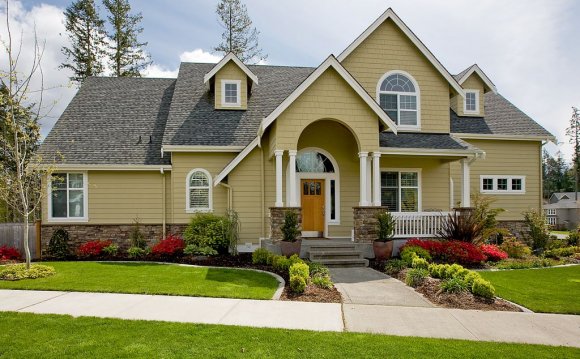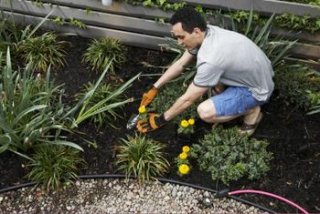
 Creativity and planning can produce a low-maintenance yard on a budget.
Creativity and planning can produce a low-maintenance yard on a budget.
Even though your time and your finances are limited, you would still like your yard to be attractive and welcoming. Creating a low-maintenance yard on a budget has its challenges, but there are many ways to meet them. Good planning, a little gardening knowledge, creativity and a willingness to think outside the window-box are all you need to make your yard an enjoyable oasis for family and visitors alike.
Make Your Plan
Take photos of all parts of your yard. Start at your front curb and go all the way around the property. This will let you identify problem spots and assets without getting distracted by specific chores or focus. Draw a rough plan of your existing yard, measuring features like the overall dimensions and approximating features that are hard to measure, like a fully blooming flower bed. If you have a two-story house, use the views from upstairs windows to fill in plan details. Make a list of the problems you want to solve. Make a list of your yard's assets as well. These preparations will give you the overall view that may get lost in problem-solving details.
Assemble Free Resources
While every community will have different resources, check on the free advice and materials you can use during your landscaping. Many communities offer free mulch and wood chips. Sometimes building yards or stone yards will have pavers, outdoor lumber or bricks they are recycling from a previous job. Heavy free building materials may or may not be a treasure because they will require both labor and transportation. Weigh the pros and cons before you agree to take materials. Neighborhood associations, chambers of commerce and garden clubs sometimes offer deals on trees, shrubs or bedding plants to improve and green the area. Check with the local native plant society or environmental center to take advantage of plant sales. Some plant sales encourage a donations table or networking and sharing among gardeners who attend. Contact your county extension for free information, soil testing and answers to horticultural questions.
Reduce the Size of Your Lawn
You will see the results of making your lawn smaller almost immediately, in your weekend schedule and your wallet. Replacing lawn with ground cover, paving or decorative stone, and permanent easy-to-maintain planting beds frees up maintenance time and saves you money on fertilizer and water. Choose ground covers appropriate to your growing conditions and climate.
Explore Hardscaping
Laying pavers for a patio reduces lawn area and produces a long-lasting surface that needs only occasional sweeping. Consider other uses of stone or gravel to reduce weeding and watering. Laying landscape cloth under a gravel-filled garden bed keeps weeds at bay. Move just enough pebbles aside to make soil-filled wells for rock garden plants, miniature evergreens or clumping ornamental grasses, or place containers on top of the gravel bed.
Plant Perennials
Save money by choosing perennial plants over annual ones. Especially in large beds, annuals provide only one year of beauty, while perennials can last for years. A clump of rudebekia, for example, puts down strong roots and expands by reseeding itself, summer after summer, while some varieties of daisy wither at the end of the season. Think about larger blocks of color, both in width and in height. It would take several flats of impatiens to equal the impact of a mature hydrangea.
Use Annuals Sparingly
To maximize the effect of bright annual colors, use small numbers of annuals in planters or containers and place them where they will definitely be noticed. Put a single brightly colored pot of zinnias by the front door or beside the mailbox post, rather than planting them in a thin border along the front of the house. Fill a terra-cotta planter with herbs instead; they will do double duty as decorative edibles. Choose one or two distinctive pots that make a decorative statement even when they are empty. As seasons change, use them for potted tulips or daffodils, followed by geraniums and then chrysanthemums.
Choose Native Plants
Native plants tend to need less fertilizer, water, pesticide and overall care than plants that originated in other regions or climates. Contact your local native plant center, online native plant resource or garden club to learn what natives will do best in your growing conditions. This can be an especially effective strategy in a microclimate with special water or soil issues.















